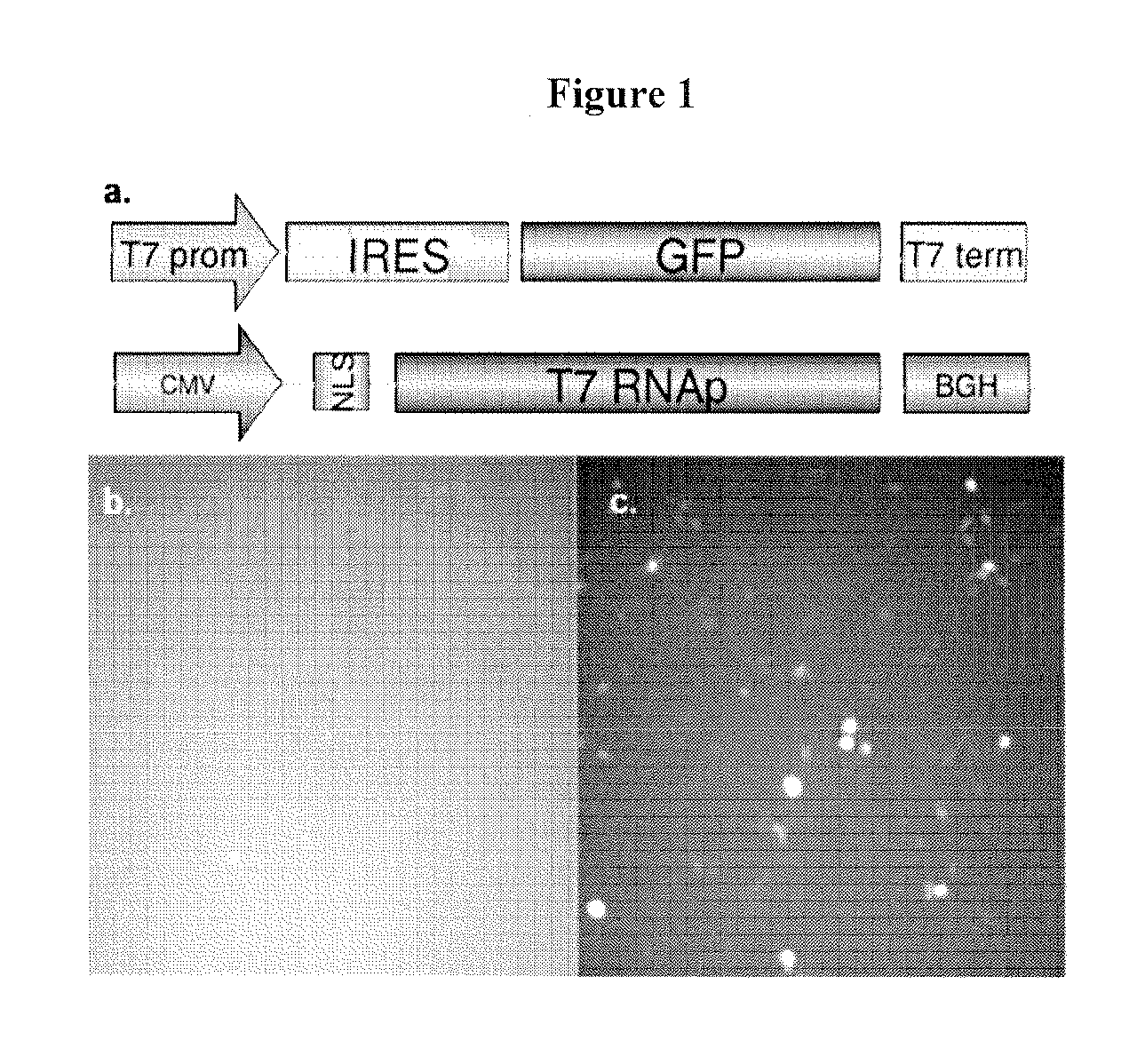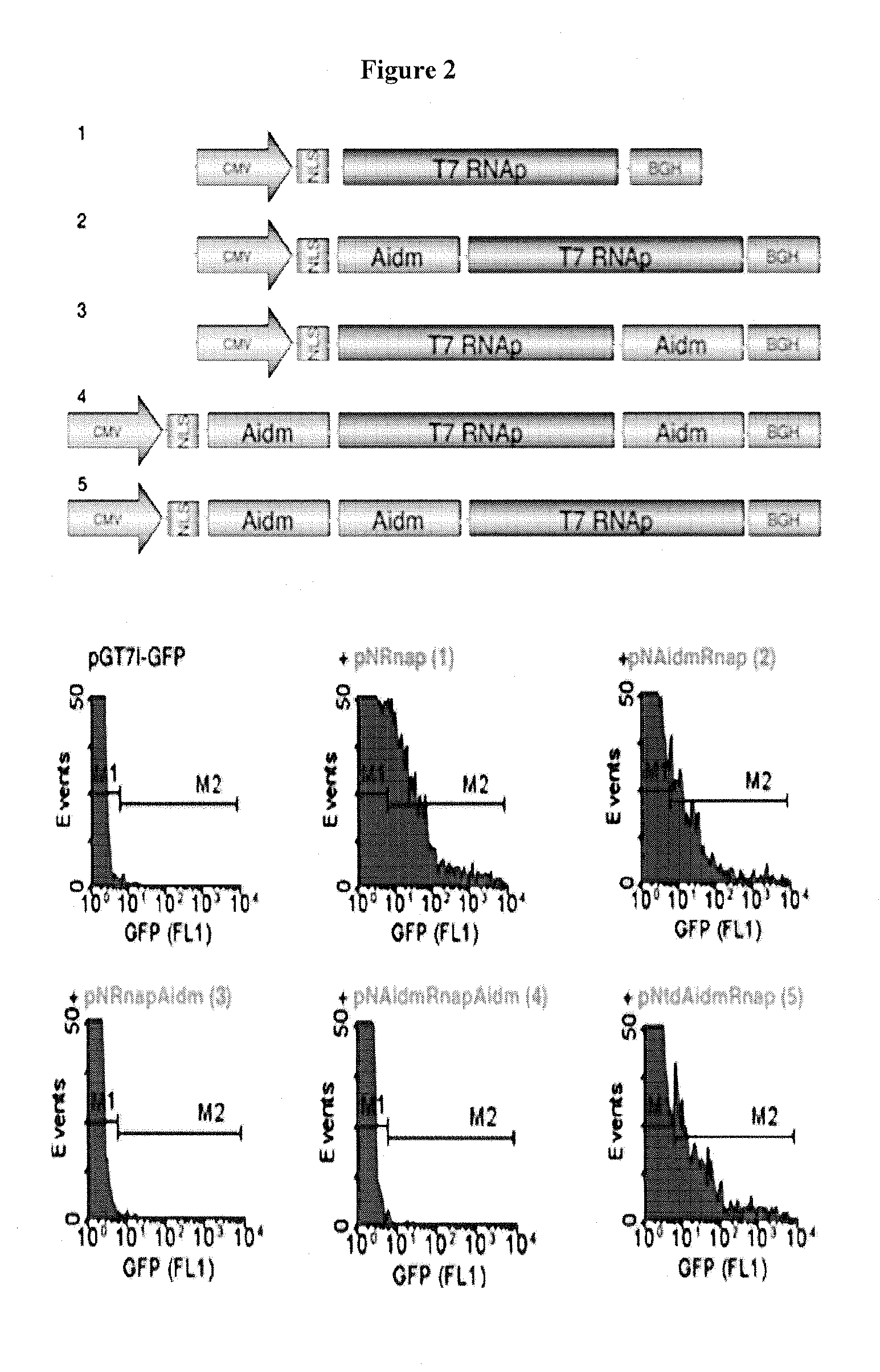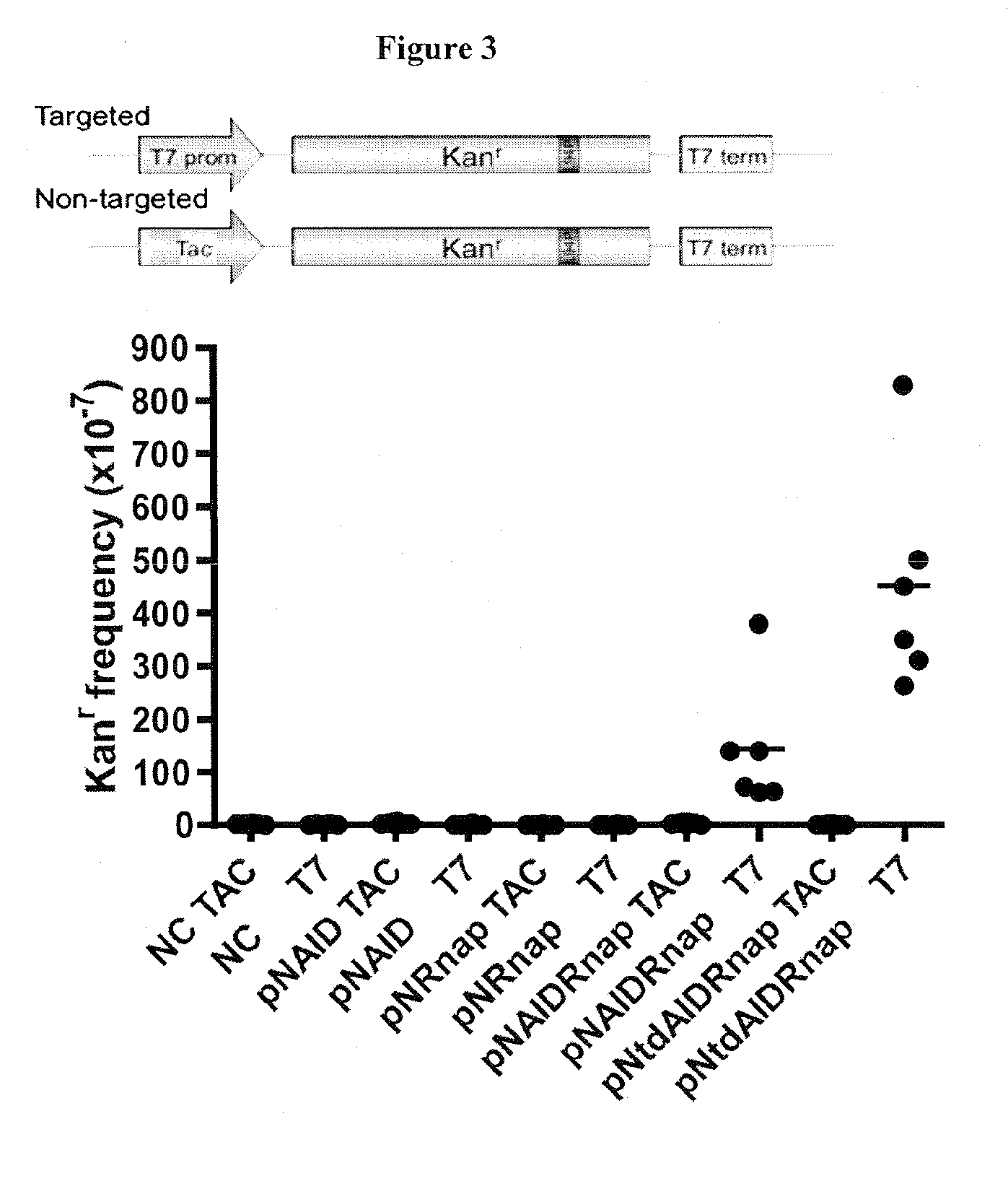Targeting of modifying enzymes for protein evolution
- Summary
- Abstract
- Description
- Claims
- Application Information
AI Technical Summary
Benefits of technology
Problems solved by technology
Method used
Image
Examples
example 1
Efficiently Target AID to a Specific Gene in HEK293 Cells to Reduce Possible Deleterious Genomic Mutations
[0113]Initially, fusion of AID to the prokaryotic LexA protein was to be used as the artificial targeting mechanism. This fusion protein would create a local concentration of AID near the gene of interest to induce deamination and in turn mimic somatic hypermutation on a targeted gene. However, one major drawback to this plan stemmed from the inability of LexA to directly bind to the gene of interest4. LexA binds to its operator sequence and the coupled AID can reach and mutate sequences that are in close proximity to the operator sequence only. Sequences far away from the operator sequence will not be mutated. To circumvent this issue, Applicants fused AID to the T7 RNA polymerase (T7 RNAp). The prominent feature of the T7 RNA polymerase is its processivity, which enables it to travel along the target DNA and therefore reach sequences both immediate to and downstream of the T7 ...
example 2
Target Low Fidelity DNA Repair Machinery and AID to Synthetically Mimic the Mutation Rate of the Variable Regions of the Ig Loci in B-Cells
[0116]How AID is targeted to the variable region in the Ig loci has remained elusive. Recently, it was demonstrated that AID deaminates cytosine outside of the variable region. The majority of these deamination events are repaired in a non-mutagenic fashion. The high mutation rate at the variable region can be a result of the combination of AID targeting and low-fidelity repair. Another possibility is that AID is not targeted and deamination events are occurring throughout the genome. The deamination events are selectively repaired with high fidelity to reduce harmful mutations or with low fidelity as seen in somatic hypermutation. Using a synthetic approach based on the T7 RNAp targeting method, these questions can be addressed by targeting AID and proteins involved in low-fidelity DNA repair.
example 3
Use of the Artificial Gene Specific Diversification Method to Evolve Proteins with Unique Properties
[0117]A potential problem with prolonged exposure to AID is the accumulation of deleterious mutations in the genome through non-specific deamination events. An additional benefit of using retroviruses to make a stable cell line is the ability to re-package the gene of interest back into a virus to infect fresh cells that do not contain deleterious mutations in the genome. Furthermore, the re-infection process can provide a step of recombination of the mutated genes by the innate mechanism of replication of the virus. Recombination allows for the enrichment of positive mutations to further increase the efficiency of evolving proteins21.
[0118]Using the previously mentioned stable cell line of HEK293T cells with an integrated T7 promoter-RFP, evolution experiments have been carried out to red shift the emission wavelength of RFP. mPlum was originally developed by evolving RFP in Ramos ce...
PUM
 Login to View More
Login to View More Abstract
Description
Claims
Application Information
 Login to View More
Login to View More - R&D
- Intellectual Property
- Life Sciences
- Materials
- Tech Scout
- Unparalleled Data Quality
- Higher Quality Content
- 60% Fewer Hallucinations
Browse by: Latest US Patents, China's latest patents, Technical Efficacy Thesaurus, Application Domain, Technology Topic, Popular Technical Reports.
© 2025 PatSnap. All rights reserved.Legal|Privacy policy|Modern Slavery Act Transparency Statement|Sitemap|About US| Contact US: help@patsnap.com



